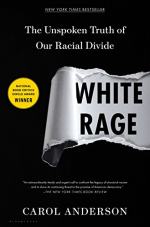
|
| Name: _________________________ | Period: ___________________ |
This test consists of 15 multiple choice questions and 5 short answer questions.
Multiple Choice Questions
1. When did race riots occur in the North?
(a) Between 1917-1920.
(b) Between 1860-1863.
(c) Between 1770-1771.
(d) Between 1940-1945.
2. What is the period of American History following the Civil War?
(a) Reconstruction.
(b) Reallocation.
(c) Redistribution.
(d) World War I.
3. To what country did the American Colonization Society move thousands of newly freed people?
(a) Libya.
(b) Louisiana.
(c) Lusitania.
(d) Liberia.
4. What is the Great Migration?
(a) Exodus of Blacks to Africa.
(b) Exodus of Blacks to the North.
(c) Exodus of Whites to Africa.
(d) Exodus of Blacks to the South.
5. Where did the “Red Summer” occur?
(a) Europe.
(b) North America.
(c) South America.
(d) Africa.
6. Where did Dr. Sweet move to after the trial?
(a) Black Bottom.
(b) Washington D.C.
(c) Mississippi.
(d) New York City.
7. In which newspaper was the author’s initial piece about “white rage” published?
(a) Washington Post.
(b) Milwaukee Tribune.
(c) Chicago Defender.
(d) New York Times.
8. Who became president after Lincoln was assassinated?
(a) Richard Nixon.
(b) Andrew Johnson.
(c) Andrew Jackson.
(d) Lyndon Johnson.
9. What year were the Black Codes passed?
(a) 1965.
(b) 1865.
(c) 1776.
(d) 2010.
10. As more Blacks moved north, what happened as a result of the increased housing demand?
(a) People moved back South.
(b) Rents decreased.
(c) Rents increased.
(d) Blacks moved to Europe.
11. After Diallo’s murder, what did Black Americans express concern over with regard to the New York Police Department?
(a) Lack of force.
(b) Community policing.
(c) Low wages.
(d) Racial profiling.
12. In 1918, The Federal Government issued what order for Blacks?
(a) Work or fight.
(b) Move or fight.
(c) Teach or fight.
(d) Get married or fight.
13. Under which law did the Supreme Court uphold “racially restrictive housing policies”(56)?
(a) Sweet v. Department of Housing.
(b) Parmalee v. Morris.
(c) Brown v. Board of Education.
(d) Plessy v. Ferguson.
14. What event prompted Anderson to write this book?
(a) Trump’s presidential victory.
(b) The murder or Amadou Diallo.
(c) The murder of George Floyd.
(d) The 13th Amendment.
15. Created by Congress in 1865, the Freedmen’s Bureau was responsible for what?
(a) Reallocating abandoned southern land to newly freed people.
(b) Moving newly freedmen North.
(c) Giving furniture to the recently emancipated.
(d) Helping the newly freed find jobs.
Short Answer Questions
1. What was Ossian Sweet’s occupation?
2. Which Amendment Abolished Slavery?
3. Who created the American Colonization Society?
4. In what year did the “Red Summer” occur?
5. What is the name of the area of Detroit to which Blacks moved during the Great Migration?
|
This section contains 388 words (approx. 2 pages at 300 words per page) |

|




